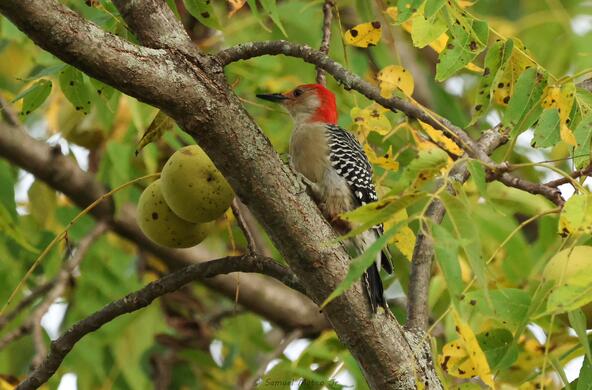Protecting the environment is usually easier to the extent we can link it to human health concerns. The tough federal Clean Air Act, for example, has been driving the Chesapeake Bay cleanup, but the real impetus for the law is the Environmental Protection Agency’s estimate that it’s saving more than 160,000 human lives each year.
A far tougher sell has been promoting biodiversity, restoring the full suite of plants and animals and natural habitats that are under assault here and globally.
Growing documentation of nature’s “ecosystem services” has helped: from pollution removal by oysters and wetlands, to forests’ capacity to absorb CO². But none of this has proved to be the big persuader.
“But what if the loss of biodiversity made you sick…more likely to be exposed to infectious diseases?” asks Richard Ostfeld in his groundbreaking 2011 book, “Lyme Disease—The Ecology of a Complex System.”
Cases of Lyme disease have tripled in the last 25 years and it’s becoming the most common tick-borne malady. The Northeast is the epicenter. It is no coincidence, Ostfeld said, that Lyme-prone areas are where human disruption of forests and other habitats prevail.
Ostfeld and his colleagues at the Cary Institute of Ecosystem Studies, in New York’s Dutchess County, have live-trapped hundreds of thousands of woodland mammals, and on each painstakingly counted the blacklegged ticks that transmit Lyme to humans.
Their work recalls terms I used to hear: “the lumpers,” researchers who seek the complex, holistic view, like Ostfeld. On the other end are “the splitters,” who work the microscopic end of the spectrum, narrowly focused.
Ostfeld’s book shows how our tendency to find quick and simple solutions to Lyme after it emerged in the 1970s did us no favors.
First, it was white-tailed deer — their numbers had exploded as Lyme disease had burgeoned, and they carried vast numbers of blacklegged ticks — still misidentified as deer ticks. But years of studies couldn’t reliably correlate deer numbers and Lyme disease. Indeed, only a tiny fraction of the ticks on deer became infected with the bacterium that causes Lyme.
Then it was white-footed mice. Widespread in the environment, they appear the perfect source. Chipmunks and shrews also contribute significantly, Ostfeld found.
Just as significant is how many other species are around that attract a lot of ticks, but eat them or just don’t infect them like the mice do.
Opossums, for example, turn out to be veritable “ecological traps” for the blacklegged tick, consuming thousands of them a week, passing on extremely few that might ever infect a human. The bottom line is that a diverse woodland community of animals contains many such traps for the ticks that otherwise might bite a mouse or chipmunk and become likely transmitters of Lyme.
Also clear is that forests fragmented and otherwise disrupted by humans clearly favor those mammals that are better Lyme transmitters. We need to think, Ostfeld said, of managing our landscapes for ecological health to promote human health.
Think more like diplomats who try to understand the complexities, versus warriors who train deadly fire on the immediate threat at hand.
Most of us would still go for the simple, direct approach, hoping for a vaccine to immunize us, or a toxic chemical to neutralize mice or ticks. None of these approaches shows much near-term promise; nor would it carry the manifold other benefits of healthier forests.
The implications of biodiversity as an agent of human health, Ostfeld wrote, go well beyond Lyme disease. There is evidence, he said, for similar relationships with West Nile virus, hantaviruses, and likely with the Zika virus.
The ecological approach to human health, like the diplomatic approach to peace, can be annoyingly slow and dizzyingly complicated. But the link is becoming clear, and making it may be the best hope for a sustainable world.






